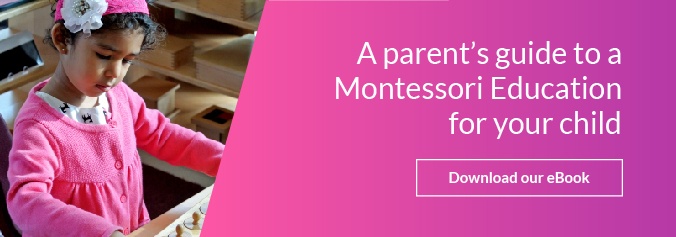Montessori education isn’t limited to the classroom—it’s a philosophy that can extend seamlessly into your home. By creating a Montessori-inspired environment, you can foster independence, curiosity, and a love of learning in your child’s daily life.
Here’s a step-by-step guide to transforming your home into a Montessori environment that supports your child’s development.
1. Embrace Child-Sized Furniture and Tools
One of the core principles of Montessori is making the environment accessible to the child. Start by incorporating child-sized furniture and tools into your home.
- Tables and Chairs: Provide a small table and chair where your child can work on activities or enjoy snacks independently.
- Step Stools: Place step stools in the kitchen or bathroom so your child can reach the sink or countertop.
- Tools: Use child-safe kitchen utensils, cleaning tools, and gardening supplies that fit your child’s hands.
When children have access to furniture and tools designed for their size, they feel empowered to participate in daily activities.
2. Organize Spaces for Independence
A Montessori home encourages children to take charge of their environment. Organize spaces so that your child can easily access what they need.
- Clothing: Use low hooks or drawers so your child can pick out their own clothes and dress themselves.
- Toys and Activities: Store toys and learning materials on open shelves at your child’s eye level. Keep items in baskets or trays to make cleanup simple.
- Kitchen: Designate a low shelf in the pantry or refrigerator where your child can access snacks and drinks independently.
An organized and clutter-free environment helps children focus and builds responsibility.
3. Incorporate Practical Life Activities
Practical life skills are a cornerstone of Montessori education. Involve your child in everyday tasks to help them develop fine motor skills, coordination, and a sense of responsibility.
- In the Kitchen: Invite your child to help with meal preparation by washing vegetables, stirring ingredients, or setting the table.
- Cleaning: Provide child-sized cleaning tools like a small broom and dustpan so your child can clean up spills.
- Gardening: Let your child water plants or plant seeds in the garden.
These activities not only teach valuable skills but also give children a sense of accomplishment.
4. Choose Montessori-Inspired Toys and Materials
Montessori toys are designed to encourage hands-on exploration and problem-solving. Look for materials that are simple, durable, and focused on a single concept.
Examples include:
- Wooden puzzles.
- Sorting and stacking toys.
- Counting beads.
- Sensory bins filled with sand, rice, or beans.
Avoid toys with flashing lights, loud noises, or overwhelming features, as these can be overstimulating and distract from meaningful play.
5. Create a Calm and Orderly Atmosphere
A Montessori home prioritizes calmness and order, allowing children to focus and feel secure.
- Limit Clutter: Keep only a few toys or materials out at a time, rotating them regularly to maintain interest.
- Designate Spaces: Establish specific areas for activities like reading, art, or pretend play.
- Natural Elements: Incorporate natural light, plants, and neutral colors to create a peaceful environment.
A calm home fosters concentration and emotional well-being.
6. Encourage Independence Through Daily Routines
Routines help children understand expectations and build independence. Structure your day with predictable activities like morning chores, reading time, and outdoor play.
Encourage your child to complete tasks on their own, such as brushing their teeth, getting dressed, or putting away toys. Offering gentle guidance while allowing them to struggle a bit helps build resilience and problem-solving skills.
7. Observe and Adapt to Your Child’s Needs
Montessori environments are designed to evolve with the child. Regularly observe your child to understand their interests and developmental stage, then adjust the environment accordingly.
For example, if your child shows an interest in art, set up a small art station with crayons, paper, and other supplies. If they enjoy building, provide blocks or construction toys.
Being attuned to your child’s needs ensures they stay engaged and supported in their learning journey.
Why a Montessori Home is Beneficial
Creating a Montessori-inspired home supports your child’s development in multiple ways:
- Fosters Confidence: Children feel capable and confident when they can complete tasks on their own.
- Encourages Curiosity: A well-prepared environment invites exploration and discovery.
- Builds Lifelong Skills: Practical life activities teach valuable skills that will serve children throughout their lives.
Start Small and Build Over Time
Transforming your home into a Montessori environment doesn’t have to happen overnight. Start with one area, such as organizing toys or creating a child-friendly kitchen space, and expand gradually.
Remember, the goal is to create an environment that supports your child’s growth and independence while fitting seamlessly into your family’s lifestyle.
Explore Montessori Education at Fountainhead Montessori School
If you’re inspired by the Montessori philosophy, consider incorporating it into both your home and your child’s education. Fountainhead Montessori School offers authentic Montessori programs that align with these principles, providing a supportive and enriching environment for children to thrive.
Schedule a tour today to learn how Montessori education can complement your efforts at home and support your child’s journey of discovery and growth.












Let us know what you think about this post
Put your Comment Below: